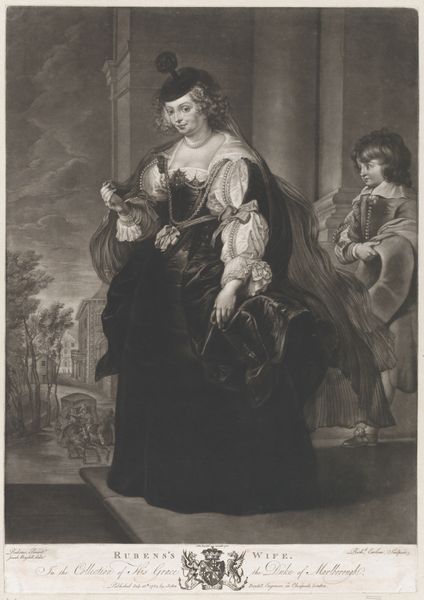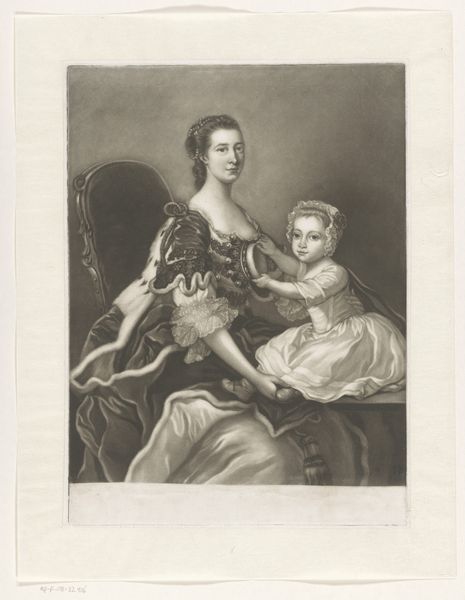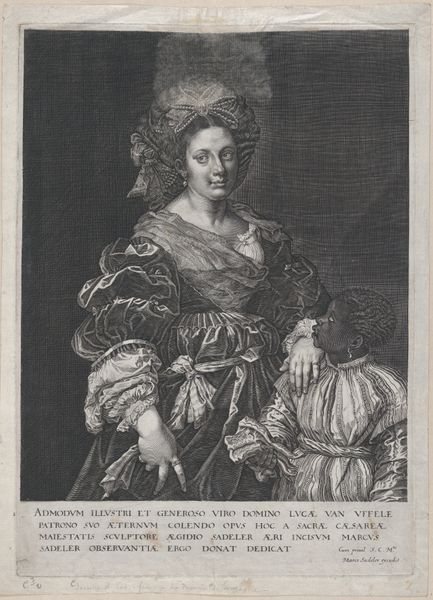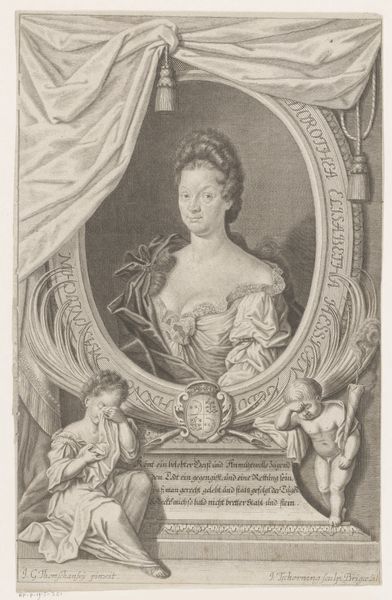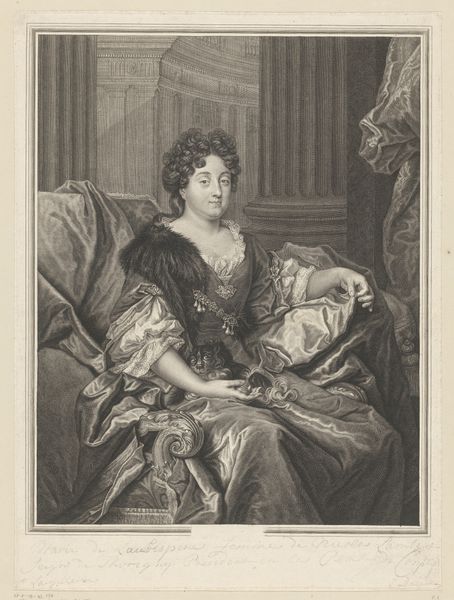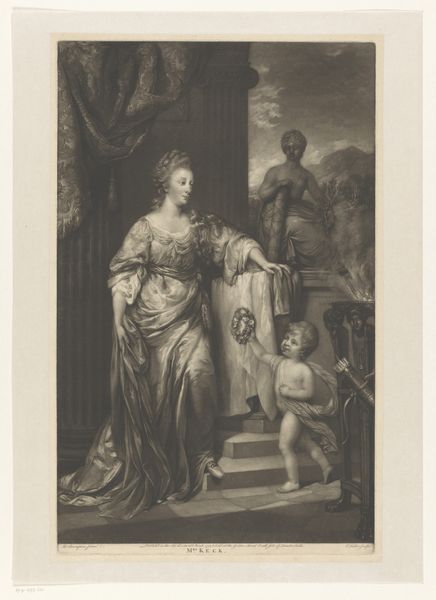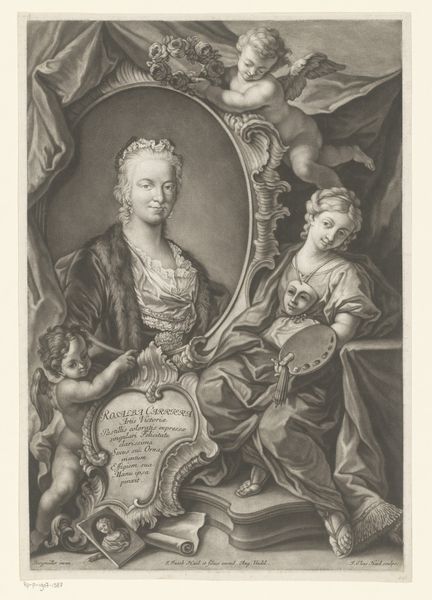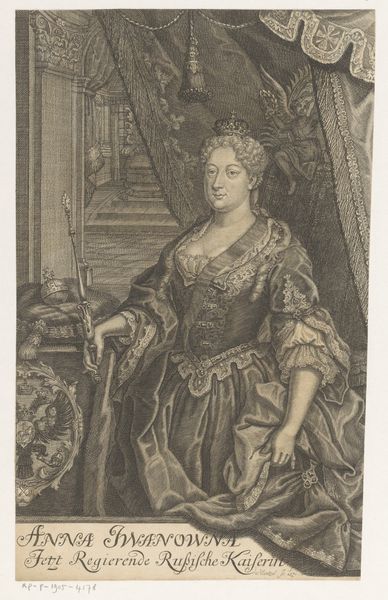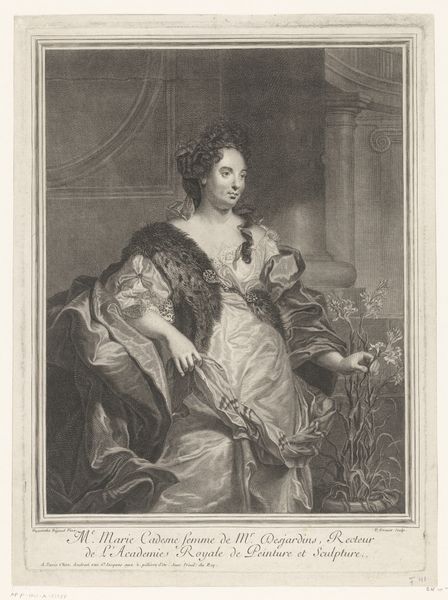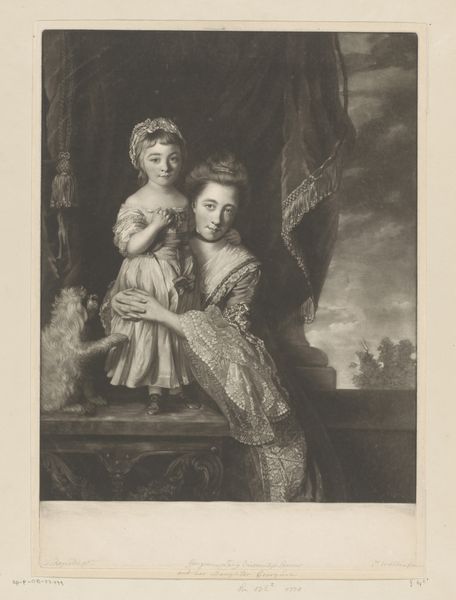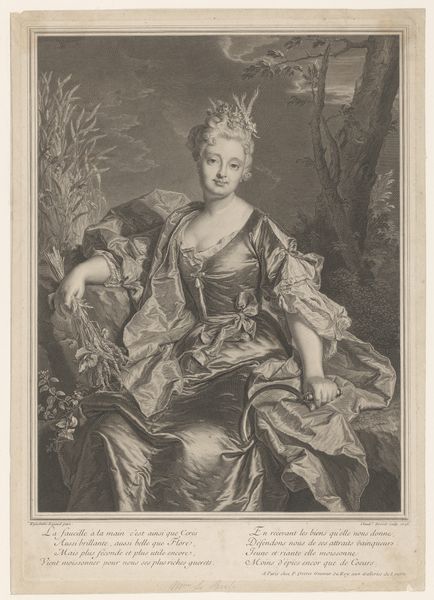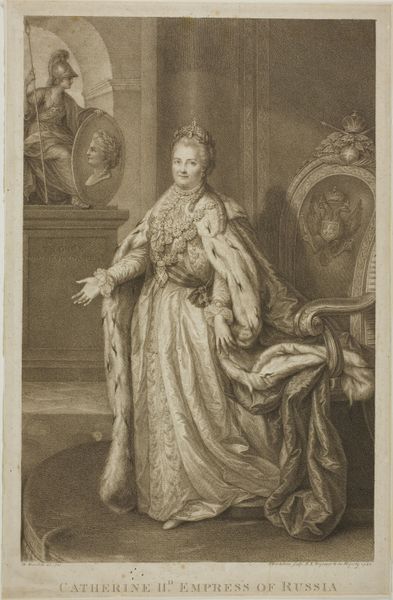
Dimensions: sheet: 20 1/4 x 14 9/16 in. (51.5 x 37 cm) plate: 14 3/8 x 9 7/16 in. (36.5 x 24 cm)
Copyright: Public Domain
Editor: This is "Le Printemps" – or "Spring" – an engraving by Jean Jacques Avril, the Elder, created sometime between 1760 and 1831. The level of detail in the women's dresses, created solely with lines and dots, is amazing. What compositional elements stand out to you? Curator: I find the composition's structure particularly compelling. Note how Avril meticulously balances the textures and tones achieved through the engraving technique. Consider the differing line weights and the way light is articulated by denser and sparser groupings of marks. What semiotic readings are we to take from the formal qualities such as light, symmetry, and composition of volume? Editor: So you are saying that the technique itself tells a story? Curator: Precisely. The very method used to create the image, engraving, imparts information about the time period and artistic intentions. Furthermore, observe how Avril uses the varying densities of line to model form and suggest depth within a two-dimensional plane, consider also the contrasting planes with focus on visual harmony through the balanced shapes of the foreground figures with a more indefinite midground space of landscape. What do you think the relation of these forms has? Editor: Now that you mention it, the soft rendering of the landscape seems to push the figures forward in space, highlighting them as the primary focus. It almost creates a sense of… artificiality. Curator: Indeed, it creates a dialectic interplay between naturalism and artificiality, a tension crucial to understanding Rococo aesthetics. By considering the artist’s manipulations of space and light, we decipher how the composition conveys this nuanced message, where a romantic world interacts with rigid planes of pictorial organization. Editor: I hadn't considered the technique itself as being such an integral part of the artwork’s message. Curator: It’s a testament to how a formalist reading can open new avenues for understanding and appreciating art. Editor: Absolutely! Thanks for expanding my understanding of Avril's method in expressing aesthetic principles.
Comments
No comments
Be the first to comment and join the conversation on the ultimate creative platform.
